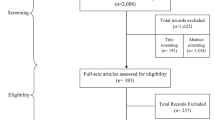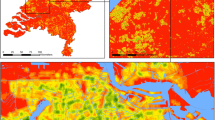Abstract
Walkability is an indicator of how pleasant a walking area is. It has many benefits that include environmental, health, and economic, and it also affects the quality of life. According to international literature, walkability is mainly affected by two of variables; (a) human-related and (b) urban form-related. Human variables include behavior, age, physical activity, safety perception, socioeconomic level, and others, while urban form variables are related to transportation infrastructure, land-use mix, streets configuration/design, and urban density. Internationally, studies in this area focused on multidisciplinary research methods combining public health, transportation, social behavior, and urban form. However, not many studies have simultaneously linked urban form variables with human behavior-related variables in a quantitative manner. On the other hand, in the Egyptian literature, a clear consensus on the advantages of mixed-use and density can be noticed. Nonetheless, empirical evidence or quantified description for these terms is rarely provided. Furthermore, no significant attention is given to the impact of human-related variables on walking. Therefore, the main aim of this paper is to investigate the international and local methodologies that focused on walkability and its relation with social behavior and urban form. The study at hand classifies and categorizes the main streams of research internationally and locally. Consequently, define gaps in the Egyptian literature and identify possible topics that need to be quantitatively addressed in the local context.
Access this chapter
Tax calculation will be finalised at checkout
Purchases are for personal use only
Similar content being viewed by others
References
Abedo, M., Salheen, M., & Elshater, A. (2019). How can urban fabrics enhance walkability? Comparative spatial analyses in Cairo. Architecture & Urbanism (pp. 34–43). Researchgate.
Abley, S., & Turner, S. (2001). Predicting walkability (No. 452). Transport Agency.
Al-Hagla, K. (2009). Evaluating new urbanism’s walkability performance: a comprehensive approach to assessment in Saifi Village, Beirut, Lebanon. Urban Design International, 139–151.
Ameli, S. H., Hamidi, S., Garfinkel-Castro, A., & Ewing, R. (2015). Do better urban design qualities lead to more walking in Salt Lake City, Utah? Journal of Urban Design, 20(3), 393–410.
Aultman-Hall L., Roorda M., & Baetz, B. W. (1997). Using GIS for evaluation of neighborhood pedestrian accessibility. Urban Planning Development, 10–17.
Barker, L. (2017). Exploring the relationship between walkability and the built environment: A case study of three intersections in Seattle’s University District. University of Washington.
Barros, A.P., Martínez, L.M. & Viegas, J.M. (2017). How urban form promotes walkability? In 20th EURO working group on transportation meeting (pp. 133–140). Transportation Research Procedia.
Board, T. R. (2005). Transportation Research Board, Does the built environment influence physical activity? Examining the evidence. Transportation Research Board.
Booth, K. M., Pinkston, M. M., & Poston, W. S. C. (2005). Obesity and the built environment. Journal of the American Dietetic Association, 105(5), 110–117.
Breheny, M. (1992). The contradictions of the compact city. Sustainable Development and Urban Form, 138–159.
Brown, B. B., & Werner, C. M. (2009). Before and after a new light rail stop: Resident attitudes, travel behavior, and obesity. Journal of the American Planning Association, 75(1), 5–12.
Brown, B. B., Yamada, I., Smith, K. R., Zick, C. D., Kowaleski-Jones, L., & Fan, J. X. (2009). Mixed land use and walkability: Variations in land use measures and relationships with BMI, overweight, and obesity. Health & Place, 15(4), 1130–1141.
Burton, E. (2000). The compact city: Just or just compact? A preliminary analysis. Urban Studies, 1969–2001.
Cao, X., Mokhtarian, P. L., & Handy, S. L. (2009). Examining the impacts of residential self-selection on travel behaviour: A focus on empirical findings. Transport Reviews, 29(3), 359–395.
Caplan, N., & Nelson, S. D. (1973). On being useful: The nature and consequences of psychological research on social problems. American Psychologist, 28(3), 199.
Choi, E. (2012). Walkability as an urban design problem: Understanding the activity of walking in the urban environment. KTH Royal Institute of Technology, Architecture and the Built Environment.
Cohen, D. A., McKenzie, T. L., Sehgal, A., Williamson, S., Golinelli, D., & Lurie, N. (2007). Contribution of public parks to physical activity. American Journal of Public Health, 97(3), 509–514.
Council, M. A. R. (1998). Creating walkable communities: A guide for local governments. Planning Commissioners Journal.
Ewing, R., & Cervero, R. (2002). Travel and the built environment: A synthesis. Transportation Research Record, 1780(1), 87–114.
Ewing, R., & Handy, S. (2009). Measuring the unmeasurable: Urban design qualities related to walkability. Journal of Urban Design, 14(1), 65–84.
Forsyth, A. (2015). What is a walkable place? The walkability debate in urban design. Urban Design International, 274–292.
Forsyth, A. & Southworth, M. (2008). Cities afoot—Pedestrians, walkability and urban design. Journal of Urban Design, 1–3.
Forsyth, A., Oakes, J. M., Lee, B., & Schmitz, K. H. (2009). The built environment, walking, and physical activity: Is the environment more important to some people than others? Transportation Research Part D, 42–49.
Frank, L. D., Andresen, M. A., & Schmid, T. L. (2004). Obesity relationships with community design, physical activity, and time spent in cars. American Journal of Preventive Medicine, 27(2), 87–96.
Frumkin, H. (2002). Urban Sprawl and public health. Public Health Reports, 201–221.
Ghonimi, I. (2017). Towards sustainable new settlements in Egypt: Lessons learned from a comparison between traditional and modern settlements in Greater Cairo Region—Egypt. Journal of Sustainable Development.
Golan, Y. (2017). Gendered walkability: Building a day time walkability index for women in San Fransisco. The Faculty of San Francisco State University.
Gullón, P., Bilal, U., Cebrecos, A., Badland, H. M., Galán, I., & Franco, M. (2017). Intersection of neighborhood dynamics and socioeconomic status in small-area walkability: The Heart Healthy Hoods project. International Journal of Health Geographics, 16(1), 21.
Hansen, G. (2014). Design for healthy communities: The potential of form-based codes to create walkable urban streets. Journal of Urban Design, 151–170.
Ibrahim, A., & Shaw, D. (2009). Egyptian compact-city veracity: The fallacy and credibility of mixed use and high density for a low carbon city. Compact-City Veracity. 45th ISOCARP Congress.
Ibrahim, A., & Alattar, A. (2017). Street networks between traditional and new Egyptian developments, problems and learned lessons. Green urbanism (pp. 306–318). International conference: Procedia Environmental Sciences.
Ibrahim, A. (2011). Veracity of compact urban form for new Egyptian cities: Measuring urban and social sustainability of the low income neighbourhoods. University of Liverpool.
Johnson, M. (2001). Environmental impacts of urban sprawl: A survey of the literature and proposed research agenda. Environment and Planning, 717–735.
Jones, C., & MacDonald, C. (2004). Sustainable urban form and real estate markets. Herriot-Watt University.
Lee, C., & Moudon, A. V. (2006). The 3Ds+ R: Quantifying land use and urban form correlates of walking. Transportation Research Part D: Transport and Environment, 11(3), 204–215.
Leslie, E., Coffee, N., Frank, L., Owen, N., Bauman, A., & Hugo, G. (2007). Walkability of local communities: Using geographic information systems to objectively assess relevant environmental attributes. Health & Place, 13(1), 111–122.
Maria Kockelman, K. (1997). Travel behavior as function of accessibility, land use mixing, and land use balance: Evidence from San Francisco Bay Area. Transportation Research Record, 1607(1), 116–125.
Newman, P. W. G., & Kenworthy, J. R. (1989). Gasoline consumption and cities: A comparison of US cities with a global survey. Journal of the American Planning Association, 55(1), 24–37.
Owen, N., Cerin, E., Leslie, E., Coffee, N., Frank, L. D., Bauman, A. E., & Sallis, J. F. (2007). Neighborhood walkability and the walking behavior of Australian adults. American Journal of Preventive Medicine, 33(5), 387–395.
Owen, N., Humpel, N., Leslie, E., Bauman, A., & Sallis, J. F. (2004). Understanding environmental influences on walking: Review and research agenda. American Journal of Preventive Medicine, 27(1), 67–76.
Pucher, J., & Renne, J. (2003). Socioeconomics of urban travel: Evidence from the 2001 NHTS. Transportation Quarterly, 57(3), 49–77.
Rafaat, M. H., & Kafafy, N. A. (2014). Approaches and Lessons for enhancing walkability in cities. International Journal of Education and Research, 2, 301–322.
Saelens, B. E., Sallis, J. F., & Frank, L. D. (2003). Environmental correlates of walking and cycling: Findings from the transportation, urban design, and planning literatures. Annals of Behavioral Medicine, 25(2), 80–91.
Tawfik, M. (2017). Using Urban Design Qualities for Building a New Composite Walkability Index for Cairo Streets. International Design Journal, 7(4), 255–266.
Van Dyck, D., Deforche, B., Cardon, G., & De Bourdeaudhuij, I. (2009). Neighbourhood walkability and its particular importance for adults with a preference for passive transport. Health & Place, 15(2), 496–504.
Villanueva, K., Knuiman, M., Nathan, A., Giles-Corti, B., Christian, H., Foster, S., & Bull, F. (2014). The impact of neighborhood walkability on walking: Does it differ across adult life stage and does neighborhood buffer size matter? Health & Place, 25, 43–46.
Wener, R. E., & Evans, G. W. (2007). A morning stroll: Levels of physical activity in car and mass transit commuting. Environment and Behavior, 39(1), 62–74.
Author information
Authors and Affiliations
Editor information
Editors and Affiliations
Rights and permissions
Copyright information
© 2021 The Author(s), under exclusive license to Springer Nature Switzerland AG
About this paper
Cite this paper
Sami, F.A., Galal, O.M. (2021). The Relation Between Walking and Urban Form: Identifying Gaps in Egyptian Literature. In: Alalouch, C., Piselli, C., Cappa, F. (eds) Towards Implementation of Sustainability Concepts in Develo** Countries. Advances in Science, Technology & Innovation. Springer, Cham. https://doi.org/10.1007/978-3-030-74349-9_4
Download citation
DOI: https://doi.org/10.1007/978-3-030-74349-9_4
Published:
Publisher Name: Springer, Cham
Print ISBN: 978-3-030-74348-2
Online ISBN: 978-3-030-74349-9
eBook Packages: Earth and Environmental ScienceEarth and Environmental Science (R0)




